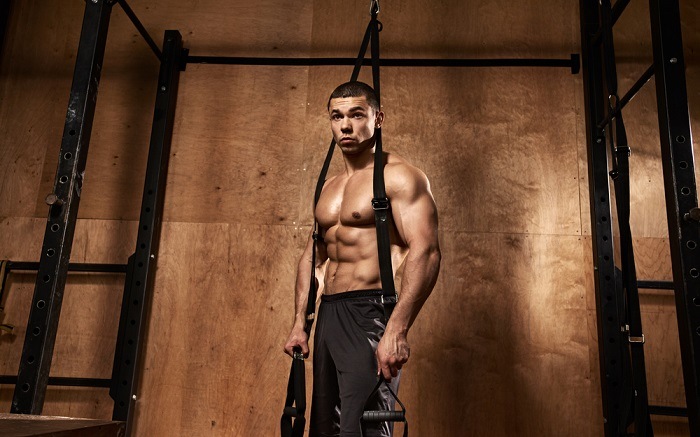There could be a handful of logical reasons as to why your knees are in terrible pain or your lower-back is that tight. Most of these physical discomforts are caused by uneven hips and for someone who experiences the horrors of this pain and believes that there are now available remedies at home, it’s become my mission to know how to fix these often nerve-wracking, uneven hips.
If you’re looking for ways to alleviate this pain in the most of comfortable ways at your gym or even at your home, then please look no further.
I’ve collated some of the easiest steps on stretches and exercises that may finally give you a pain-free life that you know you deserve. Throughout this article, I’ll guide you on how you can ease away theses tensions through simplified directions.
Read more about https://constructmuscles.com/t25-beta/
Let’s Get Started!
 But first, some pieces of advice for those who intend to go on their own at home in fixing these uneven hips.
But first, some pieces of advice for those who intend to go on their own at home in fixing these uneven hips.
♥ It is crucial that you confirm first that your hips are indeed uneven or misplaced. As these are a physical pain, the best person to check if these assumptions are true is a doctor.
♥ Your uneven hips can cause discomfort in three different bodily areas. If you are pained in at least two of these areas, then chances are that your hips may be misaligned.
Knee — Your uneven hips is one, defiant reason as to why the other side of your body has too much weight. As such, that knee in the affected are may not be able to handle the added stress that ultimately results to pain.
Hips — This is a no-brainer. When you get a pair of misaligned hips, the tendency is that they ache or produce inflamed joints.
Lower back — Accordingly, hip misalignment can catapult your body with hyper-extension and tension of the muscles right in your lower back and your abdomen. If you feel a sore or acute lower back pain, you may want to also check whether your knee or hips are aching as well.
♥ Once you’re able to confirm with your doctor that you are sporting a pair of misaligned hips, you may do these steps with utmost care.
Things You’ll Need
Resistance bands
 As the exercises and stretches you’re about to perform wouldn’t require you to go hardcore, a simple set of resistance bands would do.
As the exercises and stretches you’re about to perform wouldn’t require you to go hardcore, a simple set of resistance bands would do.
Also, ask your doctor which type of bands you’d be using for the specific issue of your hip. As you’d like a paramount safety within your exercises, it’s important that you come with the highest quality of these bands.
Yoga Mat
 Your mat should be able to handle your weight effectively, so I’d recommend a thicker one. A 71” long 24” wide type of mat might very well be your perfect choice for this as this can ensure safety and comfort while you do your hip exercises.
Your mat should be able to handle your weight effectively, so I’d recommend a thicker one. A 71” long 24” wide type of mat might very well be your perfect choice for this as this can ensure safety and comfort while you do your hip exercises.
Step-By-Step Instructions:
1.) First, you need to check whether your hips have a proper level of mobility. To do this, lay on your back in a doorway. In this manner, the middle of your kneecap should be right on the threshold.
2.) Allow your arms to rest at your sides with your palms up.
3.) Bring your feet together with your toes pointing at the ceiling. Pull your toes heading to your chins in order to create a 90-degree angle at your ankle.
4.) While on that position, please keep one of your legs straight and still. Slowly raise the other leg until either of your knees are bending on your raising leg or your bottom foot bends or goes out to the other side.
5.) During this, try to see whether the knobby part of your ankle can make it past your door frame. If it does, your hips are in mobile and in tip-top shape. Now, if either of your ankles couldn’t make it, this is the time that we may need to do some correcting.
6.) Foam roll your hips along with your glutes. You can work on this stretch using a belt or strap to achieve a quick improvement.
7.) With your belt or strap, wrap it around one of your feet. Raise that foot until you feel a stretching is achieved or done. Please don’t go overboard with your stretching a la yoga. Just see to it that you are able to stretch.
8.) Bring your other leg up to meet your raised leg. Place the non-strapped leg to the floor. While doing this, you may notice that your strapped leg may come up a little higher. If so, propel your non-strapped leg slightly to meet it again.
9.) You may continue with this procedure until you no longer feel the progress in your strapped leg. Switch.
Back discomforts aren’t necessarily caused by a back problem at all. Oftentimes, if one side of your pelvis is distinctly higher than the other then it’s likely that you experience a continuous loop of pain right from your back, hip, groin, or even all the way to your knees.
1.) Lie down on your back while your feet are flat on the floor with both of your knees bent. Do a classic sit-up position. Watch this video to check on how to conduct this position.
2.) Wrap a small resistance band around both of your knees. This will allow your knees to become tighter while your knees are together.
3.) Press out against the band to separate your knees. Do this until you’re able to form a V-shape. Hold them at the outermost edge of the press for a few moments.
4.) This lying position may be able to address you uneven hips as the muscles that are causing your pelvis to be out of alignment are being shut off.
5.) Do this for 2 sets of 20 reps for three times a week.
For the uninitiated, the iliotibial band is that piece of connective tissue that stretches out from your outer pelvis and down to the side of your leg and your knee. When your pelvis are not even, the tendency is this band become inflamed during exercise.
Caution: Do not try this procedure if you’re pregnant. This method can cause you to fall due to the change in the center of your gravity.
1.) Stand next to a wall for your support all throughout this exercise.
2.) Cross one leg behind the other then lean on the hip of the leg that you just crossed over towards the wall.
3.) As soon as you feel a stretch, stop and hold your position for a good 30 seconds.
4.) You can rest for at least 30 seconds before repeating this method for a total of 4 repetitions.
5.) Work the procedure on the other side with 4 repetitions as well. Perform these stretches on a daily basis.
You may perform the pelvic tilts exercise if you’d like to correct a pelvic tilt misalignment. In this exercise, the weak pelvic muscles that are causing your hips to go uneven may be strengthened.
1.) With bended knees, lie flat on a surface. To do this method efficiently, your arms, upper back, lower back along with your head and the balls of your feet should touch the floor. For pregnant women, the safest way to perform this method is to prop your back against the wall.
2.) With your lower back pressed against the wall or any flat surface, begin to brace your abdominal muscles. Hold the position for 6 to 10 seconds as you breathe normally.
3.) Perform this exercise for 8 to 12 times daily.
Here’s how a weak pelvic muscle on males can affect their overall health.
You can watch this video to know more about the ways to correct a pelvic imbalance and uneven hips at home.
Performing prone hip extensions on the weaker side of your hips can aid you on strengthening the muscles of both your legs and lower back evenly. I’d suggest adding ankle weights on your routine once you’re able to perform this exercise with minimal pain.Caution: This method should not be performed by pregnant women.
1.) With your face down, lie with a pillow under your hips.
2.) Bend the affected knee at a 90-degree angle with your foot pointing up. Lift this leg slowly while keeping your knee bent.
3.) Lower your leg back down slowly.
4.) Perform this method with 6 to 8 repetitions on a daily basis. You can up this exercise to up to 12 repetitions. This can be conducted in 2 to 3 times a week.
This type of stretching may work for you if you’re looking a way to establish equilibrium on your posterior hip muscles. Also, this can be performed by pregnant women who are recommended to lessen their pregnancy-induced hip pain.
1.) On your back, ensure that your knees are bent while your feet are placed on the ground.
2.) Move one knee of your knees as close to your chest as possible while your lower back is pressed to the floor. Hold this position for 30 seconds.
3.) Now, relax your leg as you it slowly.
4.) After a 30-second rest, repeat this step with your other knee. 4 repetitions with each leg on a daily basis are enough.
Final Thoughts
You see, having a set of uneven hips can be quite a dreadful nightmare to experience especially when you are not aware of what is truly causing your body pain. As such, it is essential that you determine first what is causing these pain through your physician.
From then onwards, you can check on this streamlined list of stretches and exercises the best possible method you can perform. And with just the right surface and equipment, your hips should be all good to go in weeks.
If you feel like sharing your journey on how you fixed your uneven hips, please sound them on the comment section below!

Hi there,
I’m Gregory Brown, chief editor at ConstructMuscles.com
I spend half of my time in this blog while the other half on being physical fitness trainer. Believing in the great benefits of bodybuilding and fitness to the body, I’ve been motivated to become a fitness enthusiast. It also was what gave me the self-confidence and assurance within myself both physically and psychologically.

